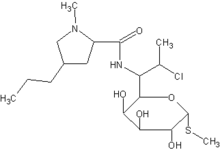PURPOSE: The ARM Program, an ongoing project of the University of Florida, documents trends in antimicrobial susceptibility patterns in inpatient/outpatient isolates to track antibiotic resistance. To date, 358 institutions from 6 US geographic regions have been enrolled at no cost. Each provides a minimum of 3 years of antibiogram/sensitivity report data in a HIPAA-compliant non-identifying format. These data comprise a national aggregate database containing 28.3 million isolates, 250,423 of which are S pneumoniae.
METHODS: The database was interrogated to determine resistance patterns for S pneumoniae isolates against Clindamycin and erythromycin as surrogate markers for macrolide resistance at the national, regional, and state level for data collected from 1997-2004. States were stratified in terms of resistance rates; only states with 5 or more institutions in the database were included.
RESULTS: Nationally, pneumococcal isolate susceptibility to clindamycin was 89% (range, 86.9% in Southwest to 91.4% in North Central). The 5 states with isolates most susceptible to clindamycin were Illinois (97.6%), Maryland (94.9%), Tennessee (93%), Arkansas (92.4%) and West Virginia (92%); the 5 states with isolates least susceptible to clindamycin were Virginia (87.9%), Georgia (86.5%), Alabama (83.9%), Florida (83.8%), and Nevada (76.9%). For erythromycin, national susceptibility was 67.8% (range, 62.1% in Southeast to 76.2% in Southwest). The 5 states with isolates most susceptible to erythromycin were Arizona (79.8%), Indiana (78.8%), Massachusetts (78.8%), Kansas (76.4%), and Pennsylvania (76.1%); the 5 states with isolates least susceptible to erythromycin were Virginia (62.7%), South Carolina (62.5%), Georgia (62.2%), Florida (60.5%), and West Virginia (57.9%). Virginia, Georgia, South Carolina, and Florida had low susceptibility to both erythromycin and clindamycin; West Virginia, Tennessee, Arkansas, South Carolina, and Virginia had the largest difference between clindamycin and erythromytin.
CONCLUSION: Susceptibility patterns for S pneumoniae isolates against clindamycin and erythromycin suggest the highest level of methylation-induced resistance (MLS-b) is in Nevada, while the highest level of efflux-mediated resistance (M-type) is in West Virginia.
CLINICAL IMPLICATIONS: Surveillance programs such as ARM provide the ability to track both frequency and severity of macrolide resistance.
DISCLOSURE: John Gums, None.
John G. Gums PharmD * University of Florida, Gainesville, FL
COPYRIGHT 2005 American College of Chest Physicians
COPYRIGHT 2005 Gale Group



